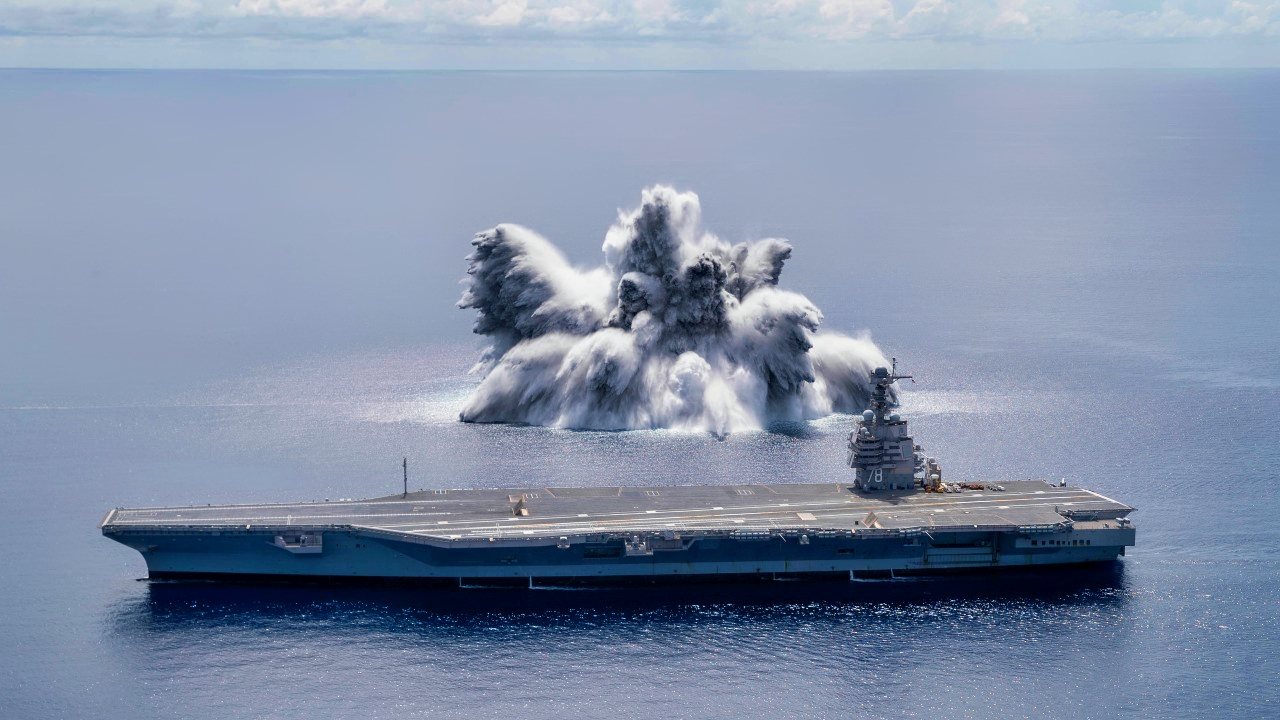$120,000,000,000: The Ford-Class Aircraft Carrier Just Isn't Worth the Billions

Summary and Key Points: The USS Gerald R. Ford, a Ford-class aircraft carrier, represents a pinnacle of military engineering, capable of deploying 90 fixed-wing aircraft and supporting a crew of over 4,500.

-Despite its advanced technology and nuclear power capabilities, its $13 billion construction cost and $700 million annual maintenance make it a controversial investment.
-Critics argue that in an era of anti-access/area-denial (A2/AD) strategies and rising global threats, the U.S. Navy should prioritize smaller, faster, and stealthier warships, along with submarines and advanced weaponry, over such costly carriers.
USS Gerald R. Ford: Marvel or Money Pit?
It's one of the most beautiful, technologically sophisticated weapons platform ever devised by Man. Carrying a whopping 90 fixed wing aircraft, including the Boeing F/A-18E/F Super Hornet, the Boeing EA-18G Growler, the Grumman C-2 Greyhound, the Northrop-Grumman E-2 Hawkeye, Lockheed Martin F-35 Lightning II fighter craft, as well as an assortment of helicopters as well as unmanned vehicles, the U.S.S Gerald R. Ford, the first of its class, is a modern marvel. The leviathan can carry a crew complement of more than 4,500 people. It has a nuclear power plant that can allow for the ship to enjoy extended deployments.
And, when compared to older models of the US Navy's ubiquitous aircraft carriers, the Ford-class aircraft carrier has a far stealthier cross-section, allowing for it to operate for longer periods of time in a contested battlespace.
The downside is the cost--and time--it takes to build or even repair the Ford-class carrier. The Ford-class costs around $13 billion to build. From there, it will cost around $700 million just to maintain a single Ford-class carrier. Although, according to US Navy Captain Brian Metcalf, future versions of the Ford-class carrier are slated to cost $5 billion less than the prototype, the USS Gerald R. Ford, cost (at least, according to Metcalf).
Nevertheless, this is the most expensive warship in the US Navy's fleet.
The Wrong System for the Wrong War
At a time when the US military is subject to increasing public and political skepticism about the cost of its operations, with multiple new threats arising around the world to strain and drain the US military, the staggering level of money being thrown at a single weapons system, like the Ford-class carrier, demands reappraisal. Yes, it's an incredible weapon. No, it is not the weapon we need for today's--or even tomorrow's--war.
In the age of the anti-access/area-denial (A2/AD) strategy that America's rivals have readily embraced, the $13 billion Ford-class carriers are, if you'll pardon the expression, a sunk cost for the US Navy. For the first time in years, the US Navy is no longer the largest naval force in the world. That distinction belongs to China. Now, defenders of the US Navy will rightly acknowledge that China merely favors quantity over quality. But as the communists so often remind us, "quantity has a quality of its own." What's more, these were the same arguments that the British Royal Navy made when, in the 1940s, the US Navy surpassed them in size.
The A2/AD systems that China, Russia, and a bevy of other US rivals, both state actors and non state actors alike, are significantly cheaper than the Ford-class and can basically render the Ford-class combat-ineffective. That's to say nothing of the fact that no other Ford-class exists or that it will take at least five years to build (it took 12 years for the Gerald R. Ford to be built). Therefore, the risk of losing the Ford in combat to one of China's numerous antiship missiles is far greater than whatever benefits in terms of offensive capabilities against a rival nation-state, like China, the Ford-class offers.
Future Wars: Be Nimbler, Stealthier, and Faster
What's needed in today's conflicts (and tomorrow's) will be smaller, speedier, and stealthier warships. A greater emphasis on submarines will be needed rather than unwieldy and expensive legacy systems, like the aircraft carrier. Submarines could also be outfitted with drones that could be launched from the missile launches on submarines to augment maritime-based aircraft capabilities. Beyond that, the US military needs to spend the money it has been spending on cumbersome aircraft carriers instead on hypersonic missiles and space-based weapons.
The bottom-line is that, as amazing and beautiful as the new Ford-class aircraft carriers are, they are not worth the money that's been invested. This is especially so simply because modern warfare has changed and has effectively made these elephantine weapons platforms obsolete.
Regardless of how much stealth technology has been integrated into the USS Gerald R. Ford, the great ship can still be detected, tracked by China, targeted by Chinese missiles or hypersonic glide vehicles, and destroyed--all for a fraction of the cost that it takes for the US to maintain the warship.

America could find itself in a similar position that the French found themselves in at the outset of the First World War: a beautiful looking force that was completely outmatched by their rivals because they had made the wrong strategic investments--and their people paid for those bad investments.
About the Author
Brandon J. Weichert is a former Congressional staffer and geopolitical analyst who is a contributor at The Washington Times, as well as at American Greatness and the Asia Times. He is the author of Winning Space: How America Remains a Superpower (Republic Book Publishers), Biohacked: China’s Race to Control Life, and The Shadow War: Iran’s Quest for Supremacy. Weichert can be followed via Twitter @WeTheBrandon.
All images are Creative Commons and/or Shutterstock.
